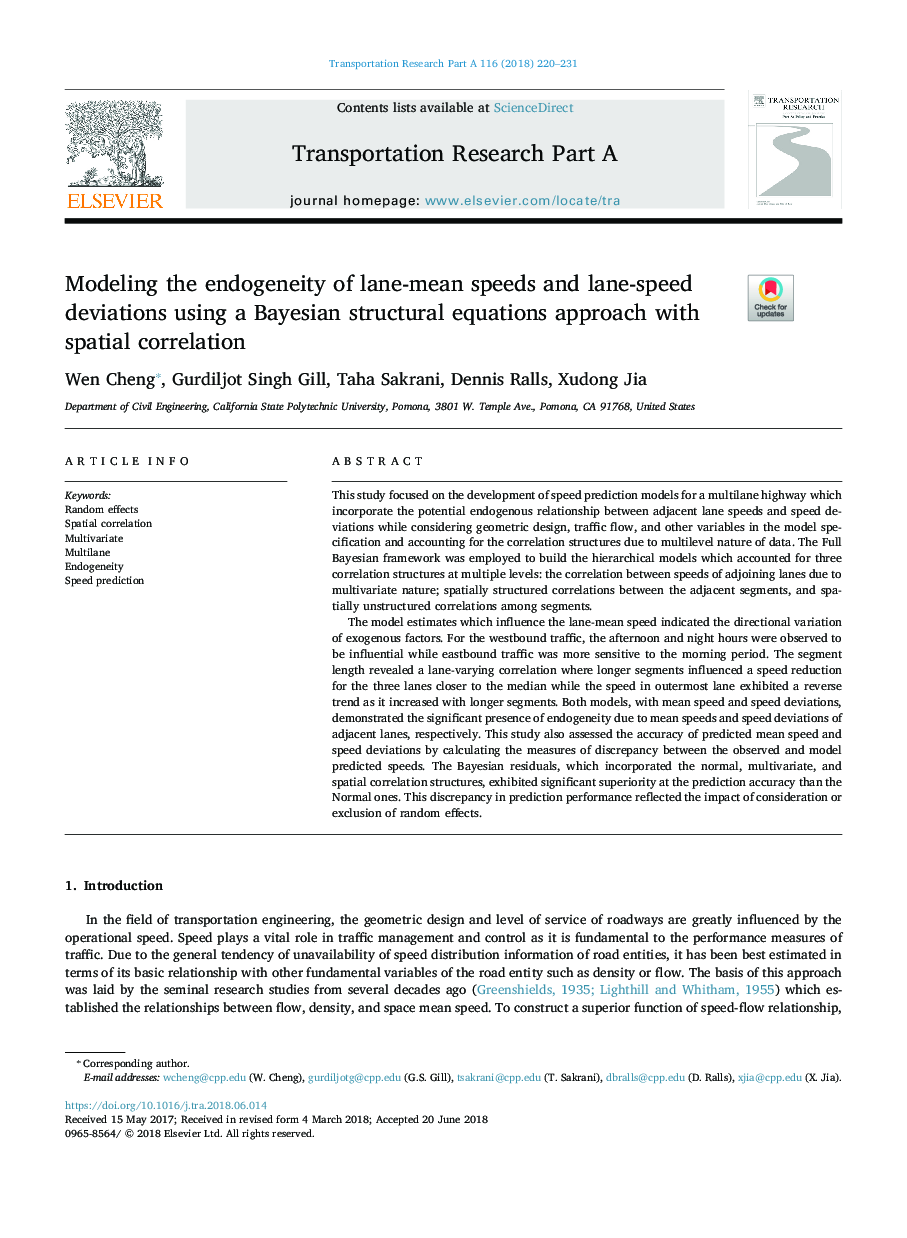| Article ID | Journal | Published Year | Pages | File Type |
|---|---|---|---|---|
| 6779707 | Transportation Research Part A: Policy and Practice | 2018 | 12 Pages |
Abstract
The model estimates which influence the lane-mean speed indicated the directional variation of exogenous factors. For the westbound traffic, the afternoon and night hours were observed to be influential while eastbound traffic was more sensitive to the morning period. The segment length revealed a lane-varying correlation where longer segments influenced a speed reduction for the three lanes closer to the median while the speed in outermost lane exhibited a reverse trend as it increased with longer segments. Both models, with mean speed and speed deviations, demonstrated the significant presence of endogeneity due to mean speeds and speed deviations of adjacent lanes, respectively. This study also assessed the accuracy of predicted mean speed and speed deviations by calculating the measures of discrepancy between the observed and model predicted speeds. The Bayesian residuals, which incorporated the normal, multivariate, and spatial correlation structures, exhibited significant superiority at the prediction accuracy than the Normal ones. This discrepancy in prediction performance reflected the impact of consideration or exclusion of random effects.
Related Topics
Physical Sciences and Engineering
Engineering
Civil and Structural Engineering
Authors
Wen Cheng, Gurdiljot Singh Gill, Taha Sakrani, Dennis Ralls, Xudong Jia,
